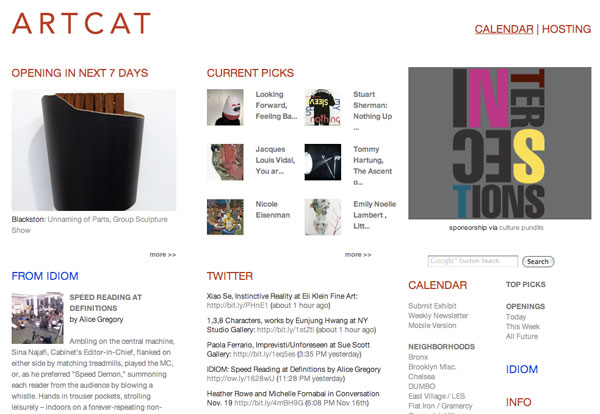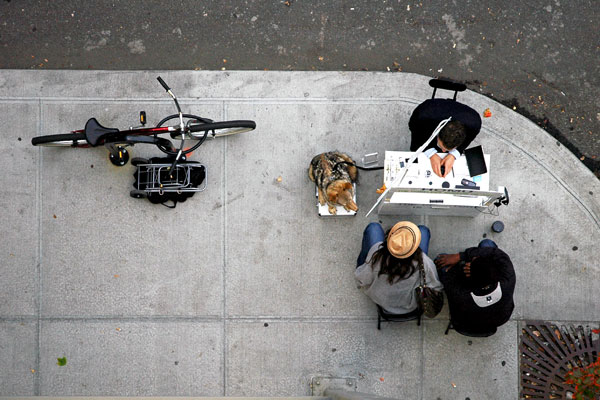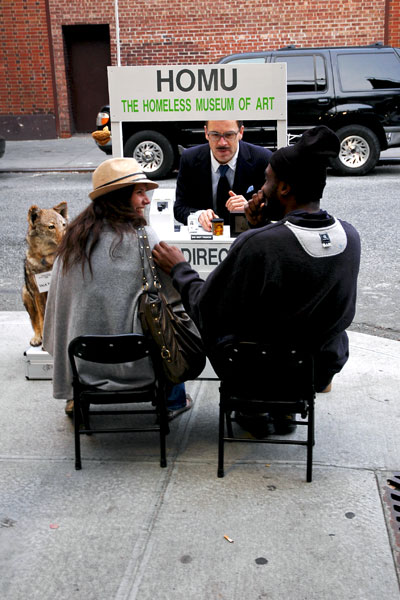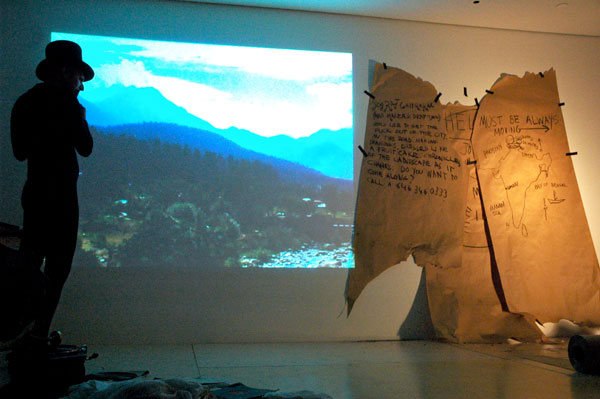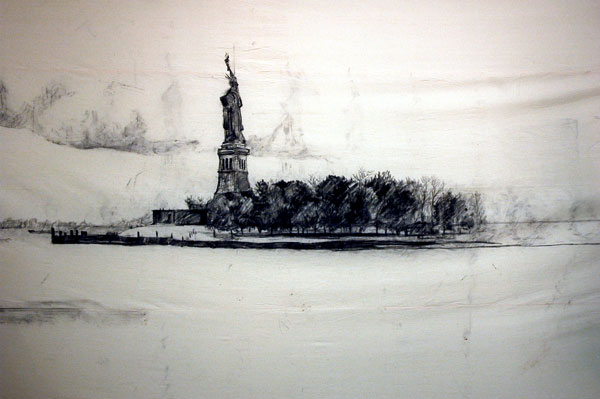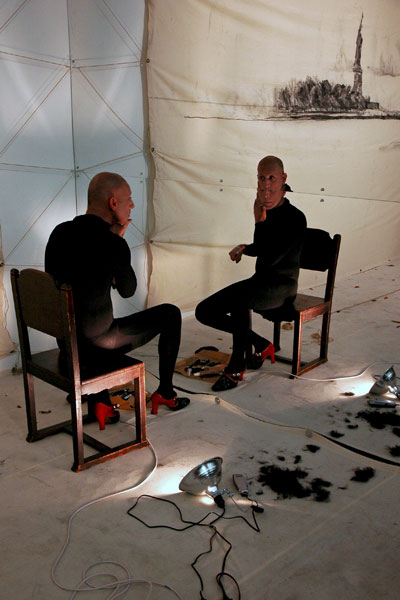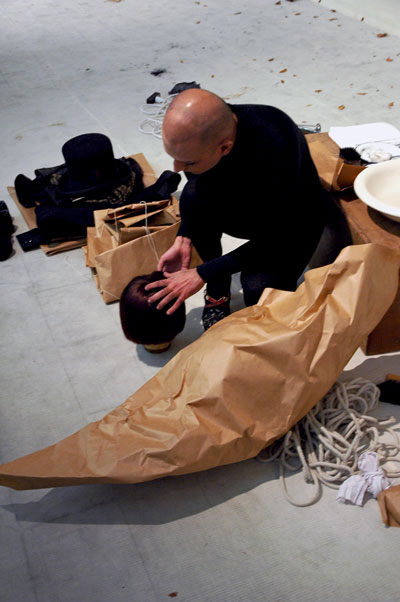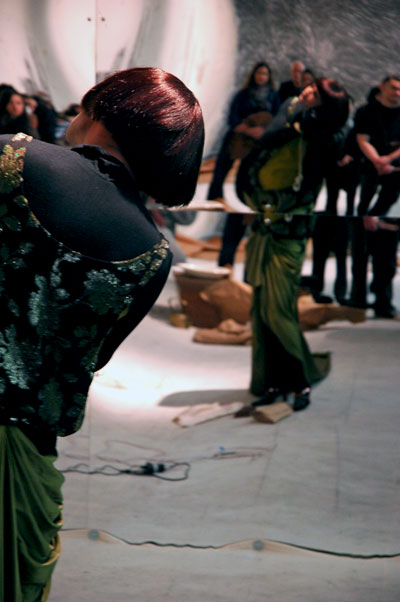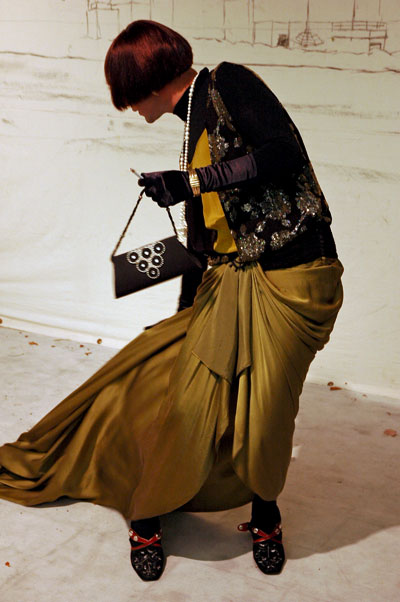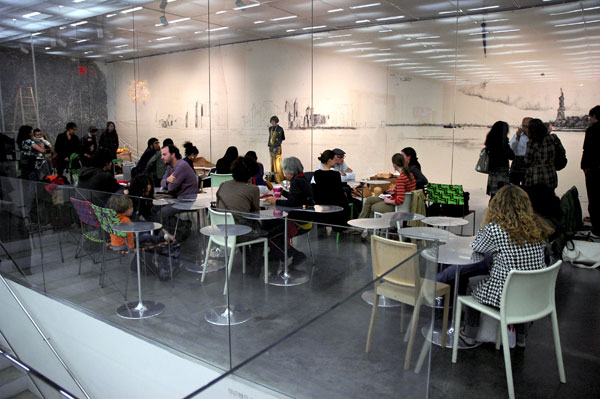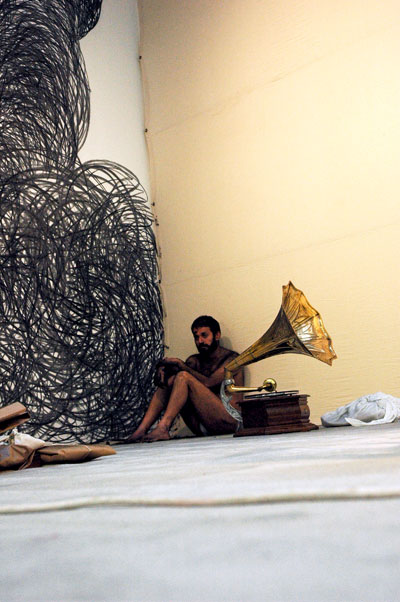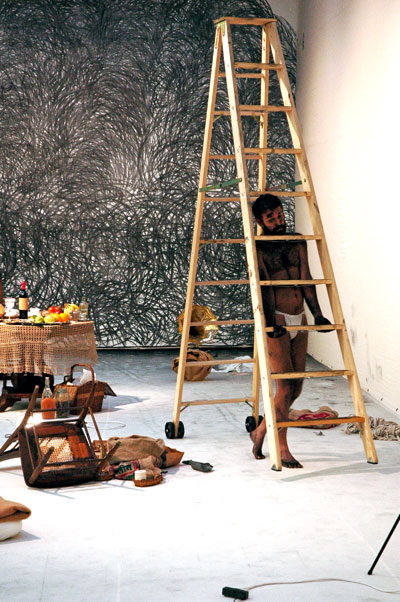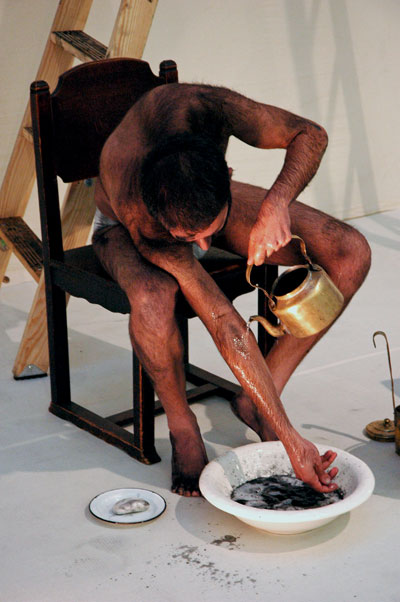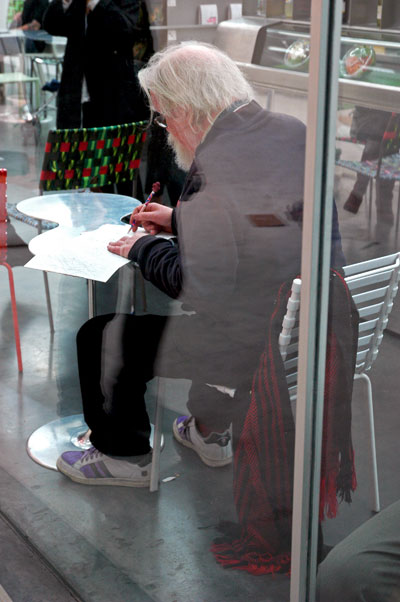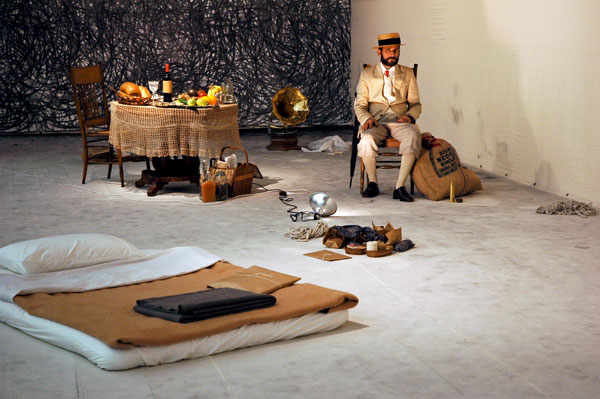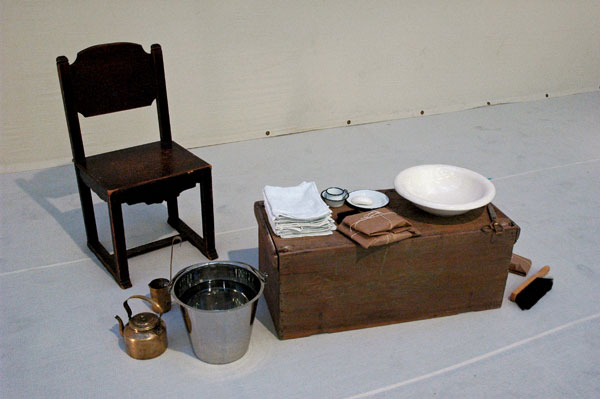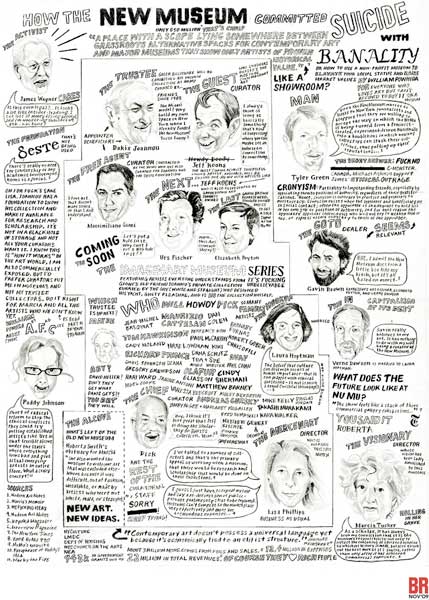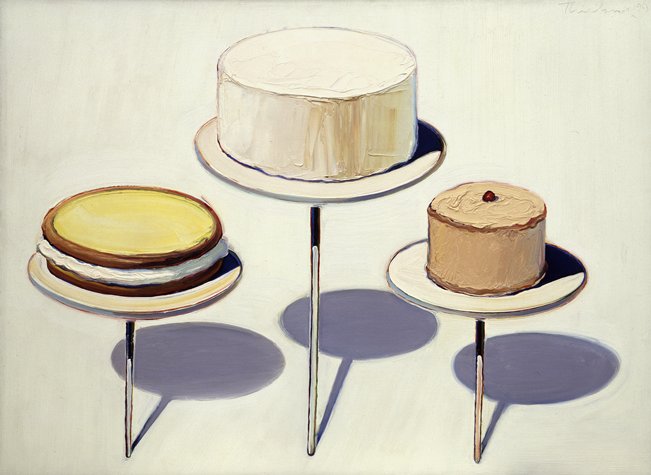
Wayne Thiebaud Display Cakes 1963 oil on canvas 28" x 38"
We're telling the bakers' families that cake just isn't enough.
Yes, yes, the rich and powerful have always been with us, and they have always pretty much controlled what art gets seen, even if they may no longer control everything that gets made. But the playing field was almost wholly altered by the explosion over recent decades in the monetary value of the work they compete for at the top end of what they have made into just another "market", and most remarkably in the run up of contemporary art prices.
When Barry and I first met with William Powhida to discuss the New Museum's plan to turn over its spaces to the Joannou collection he agreed that we all knew that this is pretty much how large art institutions operate, but added, "I just don't like them rubbing my face in it".
That was several weeks ago. Now it's become clear that Powhida wasn't the only one.
In the last decade the speed and breadth of communications provided by the internet has altered the art world even more profoundly than big money, and in ways we're only beginning to understand. Among them is the demand for transparency and accessibilty.
I've started to think that maybe earlier protests and movements for institutional reform in the arts, including but not limited to the one identified with Marcia Tucker and the founding of the New Museum itself, were only skirmishes; this time it might be the real thing. Watching what has been happening on line and elsewhere over the last week or so, I'm more and more convinced that we've started something really big, a narrowly-focused critique which has finally taken on a life of its own and gone beyond the current practice of the New Museum. I think it's particularly exciting to find that there's such a range of responses to the legitimate questions which are being raised. It makes me think a little of the conversations which preceded and continued within the French regional and national assemblies which eventually made a Revolution in 1789. Well, maybe now I'm stretching.
As a history nut I may be partial to discussions which invoke the past, but I think a commenter whose remarks appeared on Jerry Saltz's New York Magazine November 16 Vulture post yesterday morning (Wednesday) may have the right metaphor:
The issue here is deeper than this one particular event at the New Museum. There has been some kind of paradigm shift that is not being acknowledged at the top levels of the arts, and they keep partying like it's 2006. It's not.
That's all. It's the Marie Antoinette issue, let them eat cake...
Something feels illegitimate about the time, as if this current era is holding on too tightly to a time that is already gone. I sense that people are simply saying "move on". The public, contrary to Jerry's perception, is not just made up of a bunch of pauper moralists with nothing to say. Sometimes, there is a zest of zeitgeist in the air.
by hellorinis
The rich will always be with us, but maybe, just maybe, we can show them that art is not just another commodity. The aristos can keep their heads this time.
[image from SF MoMA]
